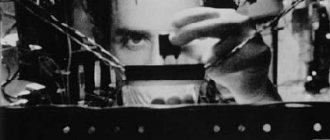A career is not an easy thing. According to the results of one study, 65% of Russians overcome the steps of the career ladder on their own, without connections and support, and according to the results of another study, 64% make a career with great difficulty.
There is no universal recipe for a career without connections and a rich dad. But we have collected tips and life hacks from successful startupers - what habits help them achieve success.
We promise: there will be no advice to run a marathon or switch exclusively to superfoods. Everything we’ll tell you won’t require any extra effort from you - just try it.
This is what successful people do every day.
Lung damage due to coronavirus on CT
When a coronavirus infection is suspected, patients are most often concerned about the following questions: how is the degree of lung damage determined, when is hospitalization necessary, and is it possible to restore the lungs after pneumonia? Let's look at this topic in more detail and see how computed tomography of the lungs will be useful.
Manifestations of coronavirus
According to the observations of Chinese scientists and doctors, summarized in the “Handbook for the Prevention and Treatment of COVID-19,” chest pain with coronavirus already indicates a progressive (about 10 days) disease. With mild pneumonia at an early stage, discomfort does not bother you. Therefore, it is very important to listen to your body (especially your breathing) and measure your temperature. And if you have been in contact with a sick person or people from epidemiologically unfavorable countries, you need to do a test for COVID-19 and a CT scan of the lungs. Only tomography reveals the initial stages of lung damage due to coronavirus, when it is easiest to cure pneumonia and preserve the function of the respiratory organ.
Lung tissue cannot hurt much because it has very few nerve receptors. Discomfort in the lungs with coronavirus is a consequence of inflammatory edema. When the alveoli of the lungs fill with fluid or fibrous tissue, the pleural membrane stretches. This causes dull pain. Along with this, with coronavirus, the patient may feel:
- Pressure in the chest, severe distension;
- Unpleasant sensations during a deep breath, with a sharp breath there is a strong, prolonged cough;
- Discomfort in the neck, collarbones, between the ribs.
However, similar symptoms are characteristic of other respiratory diseases. However, in order to exclude coronavirus or detect it in time and prevent the development of distress syndrome.
ARDS (acute respiratory distress syndrome or “shock lung”) is an acute and severe condition that is characterized by bilateral infiltration and pulmonary edema with severe hypoxemia. An extensive inflammatory process sharply causes respiratory failure, heart problems, and pulmonary vascular spasm in the patient. In some patients, it progresses to fibrosis, after which complete recovery of the affected lungs is sometimes impossible. ARDS is the leading cause of death due to coronavirus.
What does lung damage look like on a CT scan?
Lung damage caused by a new type of coronavirus is indicated by so-called “frosted glasses” - relatively light areas resembling plaque, which indicate tissue compaction. Normally there should be no “frosted glass”. The peculiarity of computed tomography is that such signs of coronavirus pneumonia are visible quite clearly, even if the lungs are affected by 5% or less. Traditional radiography and other hardware diagnostic methods have lower resolution and can therefore give ambiguous results.
In pneumonia associated with COVID-19, areas of ground glass are located in both lungs: in the lower and lateral sections, around the bronchi or closer to the pleura. CT scan allows you to determine the extent of lung damage due to coronavirus. Less than three “ground glass glasses” correspond to a mild degree of the disease, more than three indicate moderate lung damage. If their consolidation is observed, the patient’s condition is assessed as moderate, with widespread compactions - severe.
To estimate the degree of damage as a percentage, the lungs are divided into 5 lobes: three in the right and two in the left. The radiologist examines each lobe and rates how damaged each lobe is on a five-point scale, with a score of 1 representing 5% obstruction or less and a score of 5 representing more than 75%. Next, all points are added up and multiplied by 4. The resulting number will express the degree of lung damage due to coronavirus as a percentage. If the respiratory organ functions at 50% or less, this is already grounds for hospitalization.
In addition to “ground glass” on a CT scan of the lungs in patients with coronavirus, the doctor will see other clinically significant signs of pneumonia:
- “Cobblestone” or “patchwork” syndrome - when the compaction extends to the septa between the lobules of the lungs (approximately on the third day of pneumonia), the texture of the lung tissue on CT scans becomes similar to paving stones.
- Consolidation of “ground glass” - as the disease progresses (usually on days 5-8), the lung tissue becomes more dense and transmits X-rays less well, while there are fewer functional areas involved in gas exchange.
- Reverse halo symptom or rim syndrome - areas of compaction around the source of infection ("ground glass"), similar to rings. Occurs in more than 50% of coronavirus patients.
- A symptom of an air bronchogram is the presence of air in the lumen of the bronchi along with pronounced consolidation of ground glass.
How to do a CT scan of the lungs for coronavirus
No special preliminary preparation for the study is required. Before the procedure, the patient must remove all metal objects and jewelry as they attenuate the X-ray beams. Then the patient is invited to the treatment room, and he lies down on the diagnostic table. The nurse turns on the tomograph, and the table gradually moves towards the gantry - the frame of the tomograph, equipped with sensitive sensors. The scanner gantry rotates around the chest and takes many scans (pictures). All this time, feedback from the radiologist to the patient is maintained. A CT scan of the lungs is done while inhaling, the patient holds his breath for a few seconds. Then the images are processed on a computer - the program makes a volumetric 3D reconstruction of the internal organs. The radiologist studies the data obtained, records the tomogram on disk and prepares a conclusion.
Spend time with family or friends.
You can combine business with pleasure: exchange positive energy and news with loved ones and have breakfast at the same time. You can also go for a run together. If it is not possible to meet, you can always contact by phone or Skype, smile at each other and inquire about your well-being. It has been proven that being with people you love and who give you positive energy can significantly improve your mood and energy both in the morning and throughout the day.
If you are in a difficult relationship with family/friends, it is better to avoid contact in the morning. This is necessary so as not to be fueled by negativity, not to spoil your mood and not to reduce your activity.
Sunbathing.
During the night, the body manages to “miss” any light, and it needs recharging. Therefore, you should start your day in the sun, if possible. Open the curtains, go out onto the balcony, or better yet, onto the street. Take a walk after your morning exercises or do it right outside (if the weather and conditions permit).
There is an entire field of research (chronobiology) that reports that light stops the production of melatonin (the hormone responsible for sleep). It also forces the body to fully engage in daytime mode. But not getting enough natural light during the day can cause mood problems, depression and lack of energy.
It is very useful to start the morning with a jog, swimming pool or sports.
Exercise releases endorphins, chemicals produced in the brain that help minimize pain and discomfort. Essentially, these are painkillers for the body that improve blood circulation and well-being. Morning exercise gives your brain a natural boost of strength and energy. In addition, endorphins can reduce stress hormones, which can help you spend your day feeling calm and happy.
What do people need?
To understand this issue, you first need to understand what you want. To do this, you need to take paper and pen and write everything down. If this task seems difficult, first imagine in your mind the picture of life in which you would be comfortable, the environment in which you want to live for the rest of your days. And then think about what kind of person you will become, how your attitude towards life will change, how the world will change, and most importantly, whether this will make you happier and more successful. After this training, you will understand what you want, you will set goals and, by solving them, move towards your main dream. After a large-scale vision of your future, it will be easy to figure out what people and you need first. To begin discussing the main issue, let's dive a little into theory.
Let's talk about empathy
What does it mean to sympathize? This is the ability to understand the mental state of another person, his experiences and be able to perceive them. And empathy means not only listening, but also letting other people’s emotions pass through you. Does a person need sympathy? Yes. It works wonders, helps people get closer, find new and true friends, and promotes healing. Makes a person human.
We need to learn empathy; the more we show sincere attention to others, the better we will understand their position towards ourselves, and we will be able to change the attitude of other people towards others. When you sympathize, you cannot be intrusive.
Tips for showing empathy:
- Don't forget about tact.
- You shouldn't be too annoying, but you shouldn't remain indifferent either. You can call a friend in trouble and offer your help.
- Never focus on the positive aspects of the shock you have suffered. Especially when it comes to the loss of a loved one.
There are no truisms on how to show humanity; it must come from the heart, from the depths of the soul.
Drink your favorite drink and eat a delicious breakfast.
If you like to drink coffee in the morning, do not deny yourself this pleasure. Do not think about its possible harmfulness - in moderation, this drink is healthy. Prepare a “dream breakfast” (everyone has their own, but make sure it is balanced and includes ingredients). Delicious food and an invigorating drink (coffee, tea, juice) will be an excellent “springboard” on a favorable day.
You can start the day by combining breakfast with meeting friends and family at home or in a cafe. We will include this morning ritual in the next paragraph.
What kind of CT scan of the lungs is done for coronavirus?
Today, the “gold standard” for CT scans for coronavirus is considered to be a slice-by-slice 1-2 mm scan on a multislice tomograph or MSCT of the lungs. Diagnostics on such modern devices takes only a minute and allows you to obtain images in the highest possible resolution. The procedure takes place in the most comfortable conditions for the patient, so it is suitable even for patients in serious health conditions (with artificial ventilation). A CT scan of the lungs for coronavirus is performed without contrast, and its diagnostic value is superior to X-rays, MRI, and ultrasound.
In the specialized department, patients undergo a CT scan of the lungs on a new generation multislice tomograph Siemens Somatom go.Now with reduced radiation exposure and immediately receive a recording of the study (CT scans) on a DVD.
Don't confuse compassion and pity
Pity is not a deep feeling. Moreover, it carries destructive power. Why do people who find themselves in a difficult situation do not want to be pitied? Because this emotion is based on the recognized inferiority of the object of pity, his inability to get out of trouble. It makes the other person feel like a victim of the circumstances in which he finds himself.
Compassion is a manifestation of generosity. And pity is an indicator of cowardice. If you are able to sympathize and empathize, then you have a kind heart in which love lives.
What does a person need first? Being human. Loving, kind, attentive, compassionate, able to empathize. And also to be loved and accepted. Without this it is very difficult. It is then that there will be recognition, success, prosperity and well-being.
Maslow's pyramid
The classification of human needs with a description of their role in life falls into a seven-level pyramid. The beginning comes from the last, seventh step. Let's look at each in more detail:
- The basis is physiological needs. This is hunger, thirst and so on.
- Next comes the need for reliability and security, safety, self-confidence, courage, courage and others.
- Fifth stage. Need for love. To be loved and accepted, to love yourself, to feel useful.
- The fourth stage, like the previous one, consists of social needs. The need for praise, recognition of success, approval, and respect is sanctified here.
- The third stage speaks of the need to comprehend the world around us, gain knowledge and skills.
- The second is responsible for aesthetics, splendor, neatness, order, beauty.
- Vertex. The need for self-expression and self-knowledge. It combines all the needs and desires listed below. Includes developing abilities, finding a life path and achieving goals.
Using the example of a pyramid, we can conclude what people need. The main thing is to correctly determine your goals and achieve them, choosing the right paths that do not harm yourself and others.











